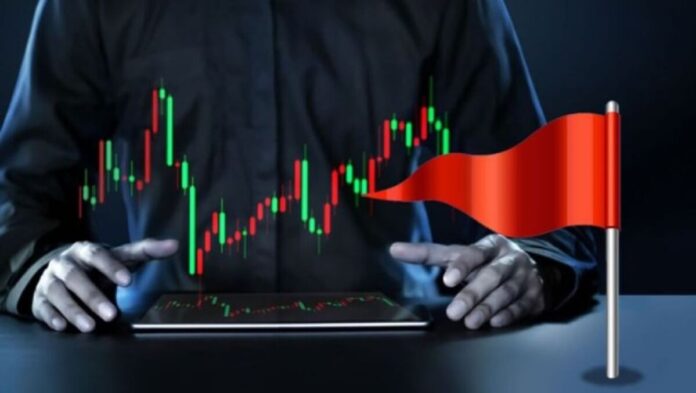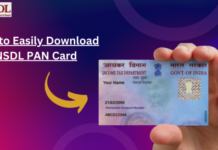We all know the fact that the forex market beats every other financial market in terms of daily turnover and trading volume. The currency market is truly global, as people from different parts of the world participate in trading to profit from the price movements of currency pairs. The price fluctuations are stated as pips, and you can depend on a pip calculator to convert pips to monetary value in your preferred currency. Most traders determine profits as the number of pips they gain in a trade, but unfortunately, a vast majority of traders lose more pips than they gain, leading to financial losses. You will be surprised to hear that ¾ of forex traders encounter frequent losses in trading.
Now, what leads to these losses? What can you do for profitable trading? We will find an answer to these questions with this article, as I am about to tell you about major red flags you should avoid as a forex trader, which will help you secure your capital.
Not prioritising risk management
You will try your best to profit with careful analysis and calculations when you place trades. However, winning all the trades we enter is practically impossible, and we will encounter losses as a part of the trading process. No trader can avoid a loss even if they have years of experience and expertise. In fact, risk management is not about avoiding losses but about minimising these losses by managing the risk in a way that resonates with our risk tolerance. Different traders will have different levels of risk tolerance, and hence, we need to determine our level to manage our risk in the best possible manner.
Not giving enough emphasis to risk management is a major red flag in forex trading. This will result in huge losses and an increased account drawdown. Those who engage in overtrading and emotional trading often have poor risk management, chasing profits without assessing the risk and potential losses. Risk management is done to limit the losses that can happen at the end of a trade. For this, you will have to set a stop loss in every trade, as it will close the position as soon as you lose a few pips.
Traders are encouraged to estimate the potential outcome of a trade using a profit calculator as that helps them to place stop loss and take profit at the perfect price levels. Besides, you should limit the risk per trade to 2% and set a risk/reward ratio that can help you make enough profits even with a low win rate. A higher win rate is not that easy to achieve in the forex market, and thus, it is better to aim for higher gains for lesser risk.
Being directionless and having unrealistic expectations
The 2nd red flag you need to watch out for as a forex trader is being directionless and having unrealistic expectations. The lack of direction is directly related to a lack of knowledge and not having a solid trading plan. Those who are new often enter the forex market thinking of making quick profits, which is impossible unless you have enough skills. They rush the learning process and think of trading as an easy game. They fail to follow a definite strategy and set unrealistic goals and expectations. Having a sense of direction, which is defined by your strategy, is important.
They are lured in by the forex influencers on social media who claim to be making millions of profits quickly. Traders who blindly believe in these claims don’t do enough research to know the truth and end up making costly mistakes by trying to follow in their footsteps. Buying an expensive EA or subscribing to a signal service will not make you a millionaire in the forex market. You should do your own analysis and follow a strategic approach to catching good trading opportunities.
Your goals need to be achievable, and you must assess the risk before expecting any reward. Because the rewards you get in trading are directly related to the amount you risk for trading. The volatility of currency pairs should also be considered while making a trading plan, as high volatility gives higher profit potential, but the risk is equally higher. Hence, you need to set your expectations after considering the risks and rewards.
Using excess leverage
Another red flag that you need to avoid in forex trading is using excess leverage. Leverage is a facility offered by forex brokers to help their clients open bigger positions with a smaller amount of trading capital. Leverage is a great tool when used within limits as it helps us to grow our trading account to a bigger scale within a short duration. However, you can also lose more money when you lose the leveraged trades. Because the trade size decides the amount of risk you take for a trade, leverage multiplies your position sizes.
But this does not mean you should not depend on leverage. In fact, not using leverage would be a lost opportunity as it can increase your profit potential. But you just need to be careful about how much leverage you use for a trade and how you manage the risk that comes with it. Those with a sound strategy, risk management plan, and trading skills can amplify their gains using leverage. You just need to limit the leverage to a level that is in line with your risk appetite.
You should also pay attention to the margin requirement while using leverage. Margin is the minimum account balance that needs to be there to keep a trade position open. If your account balance drops beyond this level after encountering a loss, there will be a margin call from your broker asking you to add more funds to make up for the margin shortfall. You can also use tools like a margin calculator to get the right margin value for your trades according to your capital. This will help you make informed trading decisions and avoid mistakes.
Lack of flexibility and adaptability
Being flexible and adaptable are essential qualities for becoming a successful forex trader. The forex market does not remain stagnant as it is subject to periodic changes due to shifts in economic and political situations. Market trends keep changing over time, and you must be prepared to adapt to these changes to make profits in any situation because strategies that worked well in the past may stop working due to a fundamental shift in the market. In this case, clinging to the old strategy will not give the desired results, and you will see a drop in your trading performance.
Read Also: The Harsh Reality of Criminal Penalties for Insider Trading
If the situation demands you to modify or change your strategy, you should be able to do that with ease. Traders lacking this ability will have difficulty adjusting to the market shifts and changes. Some strategies may work in the long run, while others may stop working after a while. If you have enough market knowledge, you will be able to spot the signs and signals for an upcoming shift. This also applies to your skill level and trading techniques, as they also need an upgrade from time to time.
You should keep learning and experimenting with new techniques, as being innovative is important in the dynamic forex market. Those still using traditional and old-school methods may not have an edge in a market ruled by modern traders using automated strategies and advanced EAs. You need to keep up with the latest updates and incorporate them into your trading. Being adaptable can take you a long way in your trading career.
Summary
To summarise, not prioritising risk management, having unrealistic expectations, using too much leverage, and lacking flexibility are major red flags for a forex trader. These red flags indicate that the trader is in a dangerous position as they encounter huge losses affecting their financial well-being. Hence, you need to focus on risk management and come up with a well-defined trading plan that can lead you to your set goals. Have realistic expectations and limit the use of leverage to avoid excess losses. Most importantly, be receptive to changes and remain flexible to adapt to any situation that arises.





































